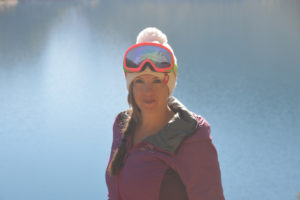YOUR GUIDE TO TAKING CHILDREN SKIING
by ISTD Private Ski Teacher Tori Collins
As a private ski teacher and mother of two based in Tignes, Tori Collins knows all the tricks and tips to help make your ski holiday with your mini adventurers a success…
Here she lets us in on some inside knowledge of skiing with children in the French ski resort of Tignes.
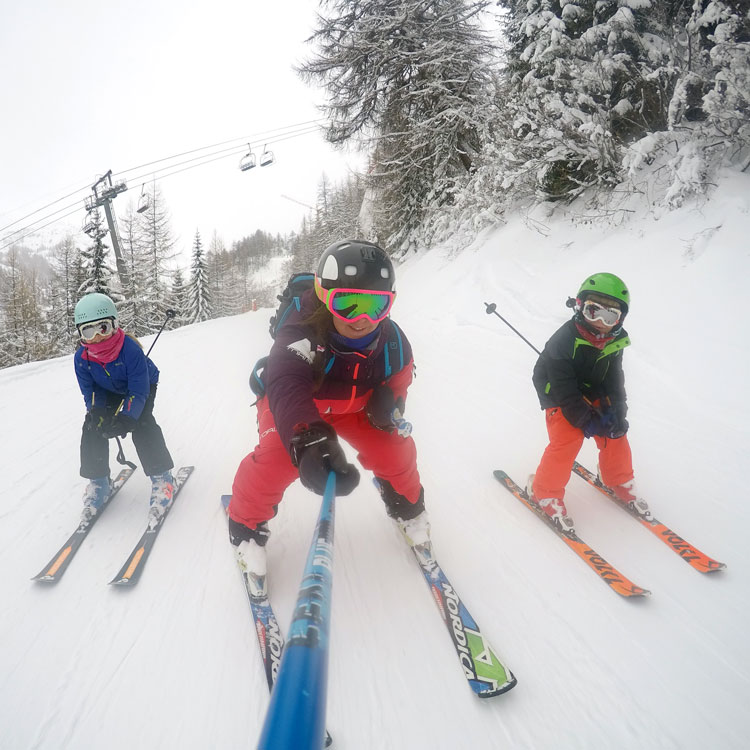
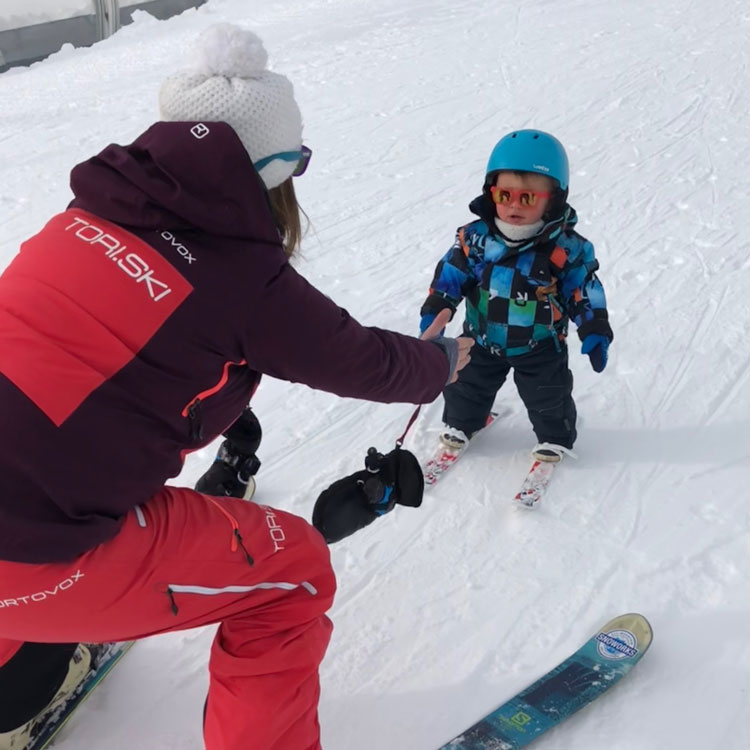
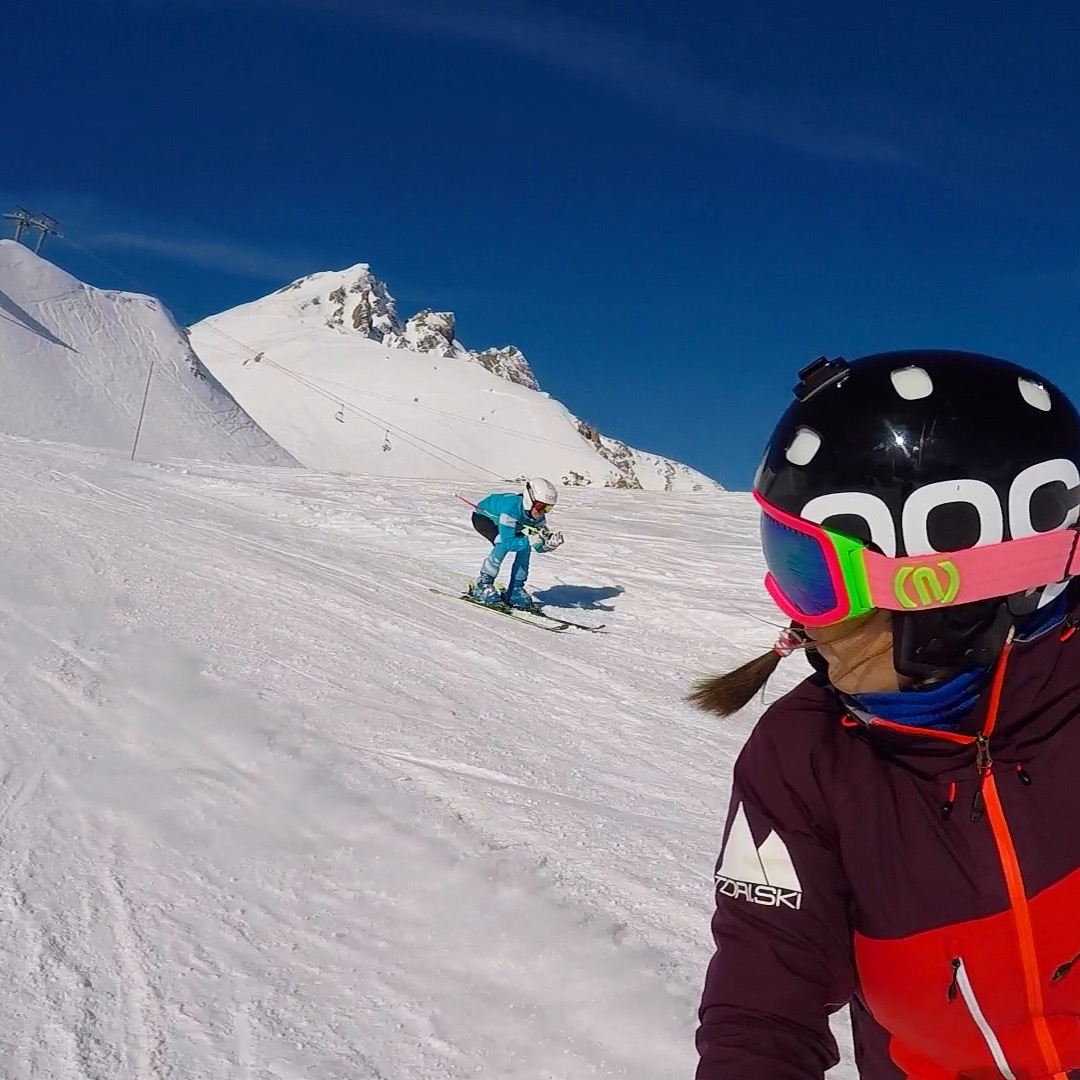
TIGNES, FRANCE
Tignes is the perfect ski resort for all the family and has a lot to offer… with 5 beginner ski areas including magic carpets and slowed down button and chair lifts, it’s a fantastic place for children and beginners too. Then once they are up and skiing we have calm green zones and blue slopes to progress onto as their confidence grows.
My oldest son Ossie, has always loved the snow parks, tree runs and skiercross course and says
‘Why would any kid want to go to Disneyland when they can come and play in this adventure ski land!’
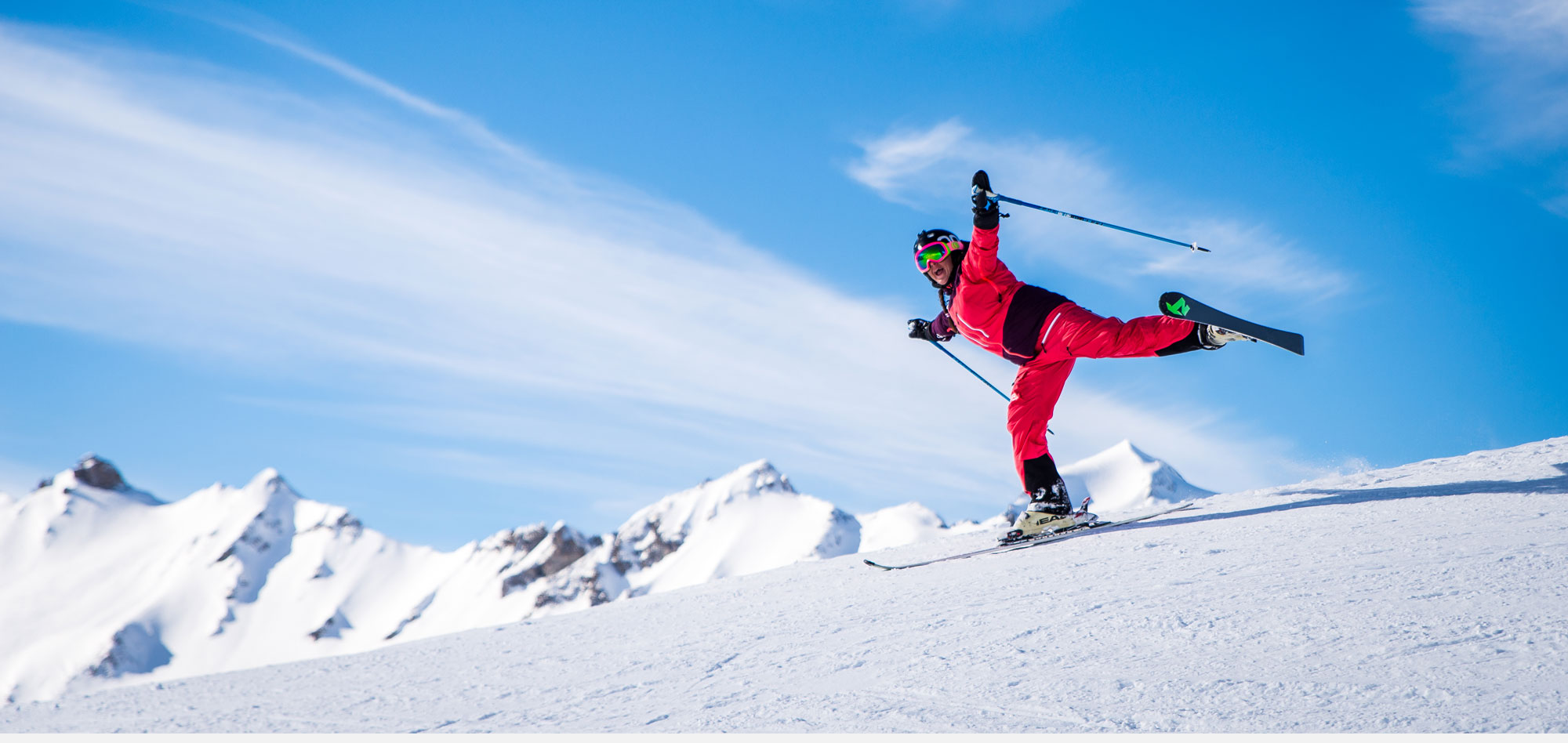
After skiing there’s plenty for children to do in Tignes – they can enjoy the Lagon pool that has a baby pool and water slides, the natural ice rink on the lake, the sledging areas, building snowmen and igloos, snow tubing, snowball fights, bungee trampolines and even night time sledging from the top of the mountain! Tignes also puts on some great apres ski children’s entertainment and fireworks displays during the peak holiday weeks and if you want to really treat the kids then husky rides, paragliding flights, snowmobiling and ice karting are also available.
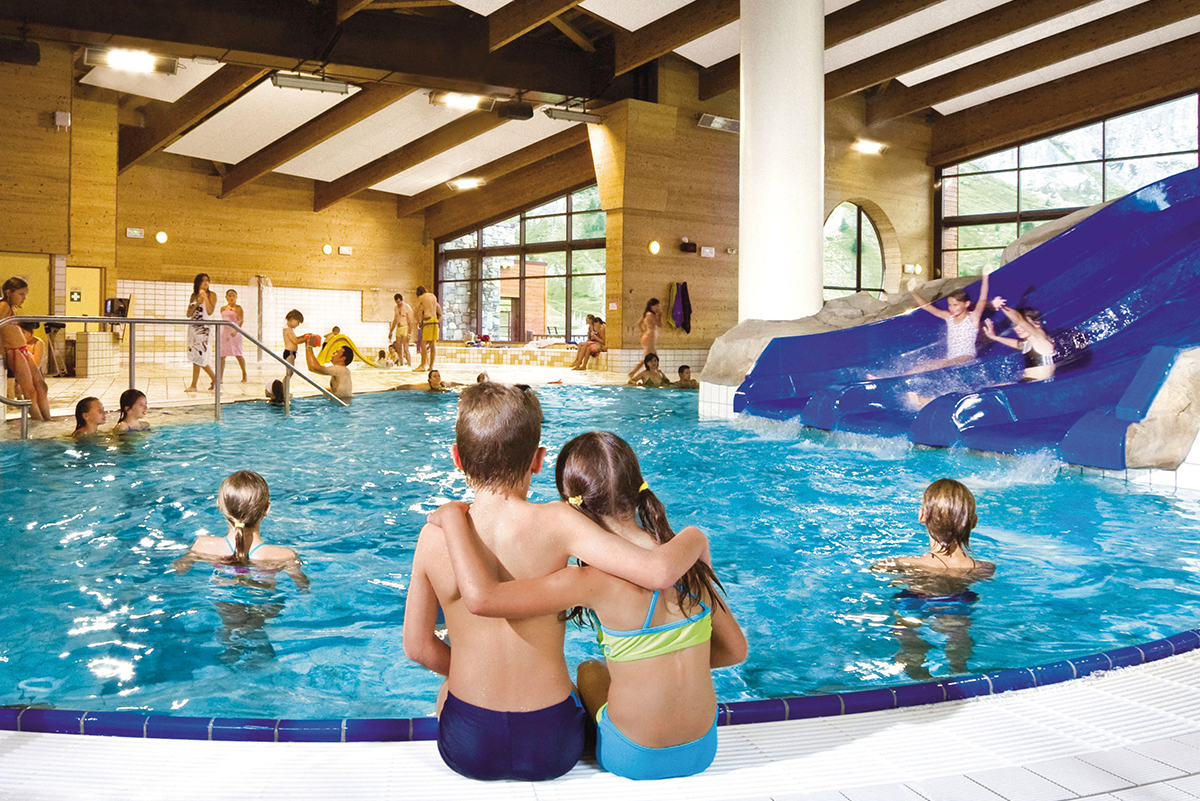
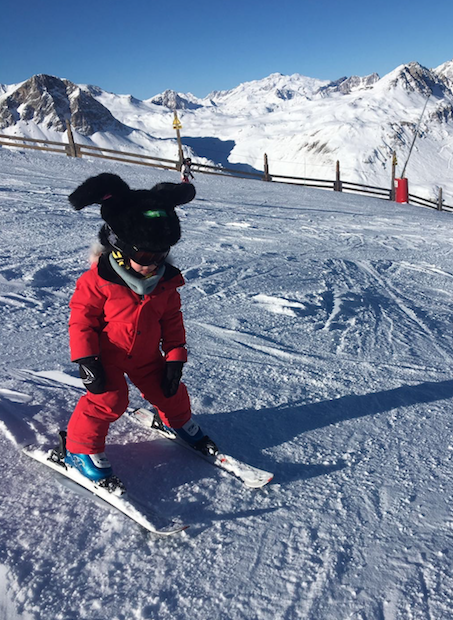
As a top qualified ski teacher and Mum to a junior champion ski racer, my advice is to
‘Get your children skiing and familiar with the mountain environment from as early as possible in order to develop a natural confident skier’.
Unlike ski schools, as a private instructor, I have no minimum age for my lessons, I am happy to take children skiing from any age. As long as they are happy to ski with me, I am delighted to ski with them! Ossie had his first slide on skis when he was just 11 months old, the day after he started walking!
Since then my motto has been…
‘If they can walk, then they can ski’
In fact my new baby son Link skied the whole of the last winter season in my tummy, before he was even born! I’m sure that he will have a go on skis this winter at some point and be skiing by next winter.
WHAT TO PACK
In a cold mountain environment, good quality equipment is essential…
Help your child get the most out of their snowy mountain experience by packing the right things.
Lots of layers
Layering is the best way to keep children warm in the snow. You’ll need to pack light fleeces, vests and long sleeved thermal t-shirts and leggings as well as their ski suit. It’s better for them to be too hot than too cold as it’s easier to take layers off than to put them on once you’re out on the hill. Layers with zips mean they can take layers off easily without needing to take off their helmet and scarf also. Buy real ski socks, but don’t double up on socks as they can rub and cause blisters.
Tori recommends : Icebreaker thermals
Two pairs of gloves
Having two or more pairs of good quality, water-resistant gloves that fit correctly will mean if/when their gloves get wet while skiing, they will have a dry pair to play in after skiing while the other pair is drying ready for the next day. Mittens tend to be warmer and mean there’s no fiddling with getting fingers in the right holes. Attaching your child’s gloves to their jacket sleeves will help prevent them from losing them.
Tori recommends : Hestra and Barts mittens
Snow boots with good grip
Ski resorts can sometimes get very icy, a good quality snow boot is worth investing in to keep your little ones the right way up.
Tori recommends : Sorel snow boots
Not so many proper clothes
The reality is that kids come home from skiing or playing in the snow and just strip down to their thermals when playing indoors. They only need to change into proper clothes if for example you’re going out for dinner. So there’s no need to overpack on normal every day clothes.
Sun Protection
Even on days when it doesn’t look very sunny, it is important to use a strong form of sun protection and lipbalm to protect their delicate skin from the sun, wind and snow. Remember to protect their face and lips in the morning and reapply again in the middle of the day.
Ski Suit
All in ones are great for babies in nappies, that don’t need to rush to go to the toilet. For older children two piece suits work better. Some jackets come with a removable inner fleece, which is a great idea for fast changing mountain weather. The brighter and more colourful the better, to keep them safe and seen!
Tori recommends : Columbia ski suits, especially the snuggly bunny for little ones
Eye protection
Your child will need good quality goggles to ski with and sunglasses for after skiing/ while taking a break. For young children you can get straps to help keep sunglasses on. Remember to dry your child’s goggles on a radiator every night, or they can fog up the next day while skiing.
Tori recommends : Bolle goggles
Their own helmet
Many companies advise renting a helmet because your child grows fast. However I believe that investing in their own good quality safe helmet that fits right, is essential to your child’s safety. They don’t grow out of them as fast as you would think and it’s peace of mind knowing your child’s head is in as safe a place as possible while doing an extream mountain sport.
Tori recommends : Cebe Fireball Helmets and POCito
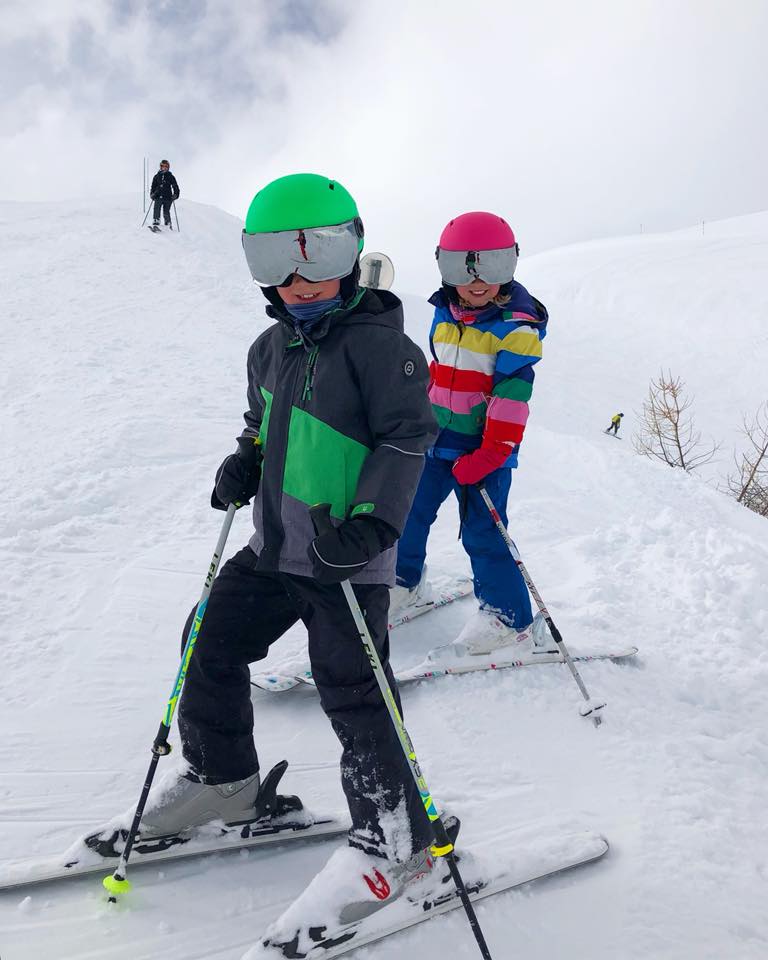
TORI’S TOP TIPS
I’ve been teaching skiing for over 17 years, since I was just 14 years old!
Here are my top tips that I have picked up over the years that I would like to share with you to help improve your ski holidays with your children.
LEAVE INSTRUCTION TO THE PROFESSIONALS
Don’t try to teach your children to ski yourself. Even as a ski instructor myself, teaching my own child was sometimes a drama. If your child is taking lessons, then leave your experienced instructor to it. No matter how good your intentions, a loitering parent often causes a distraction to children learning to ski, especially if they are bit unsure about the whole experience. If you must spy, do so from a distance.
LEAVE EARLY
Getting your kids ready and out for skiing often takes much longer than you think. It’s better to arrive early and get a drink and give them a toilet break before the lesson starts, than to start the day franticly because you’re rushing to get them to their lesson on time…or even potentially missing it.
years of experience
BOOK YOUR SKI LESSONS EARLY
Ski instructors get booked up fast, especially during peak holiday weeks. There is no doubt that your child will progress quicker and be cared for better in a private lesson than a group lesson. The only downside is that they are a bit more expensive. If you do have to book group lessons, then make sure you choose a ski school with a max group size of 6 children and just 4 children for beginners and young children.
Winter season starts in...
Day(s)
:
Hour(s)
:
Minute(s)
:
Second(s)
SNACKS
Try and encourage you child to eat a good breakfast and pack their pockets with snacks and money for drinks while skiing. Whenever possible encourage them to drink water as dehydration at altitude is very common. Many of the families I ski with bring their snacks with them from home.
KEEPING WARM
In cold weather, It is so important to take your children indoors before they get too cold as it’s difficult for their little bodies to warm back up once they become over cold. I always carry disposable hand warmers for myself and my skiers and recommend always having a fitted scarf.
LET THEM REST
Skiing is a very tiring sport and often I see even the most active, fittest children get tired , especially on their third day of skiing. When this happens let them rest, finish early or even take the day off. This will allow them to continue enjoying the rest of the week.
YOUR CHILD HAVING FUN IS MORE IMPORTANT THAN HOW MUCH THEY PROGRESS
What is important is that you child learns to love the mountains as much as you do, that they enjoy skiing with their instructor and they want to come back again next year. Please try not to get hooked up on badges, levels or certificates, the important thing is that if your child is having fun, then they are learning in the best way possible and will want to come back each year. I think that pictures and videos of your children skiing is far more valuable than a certificate with their name on it. Plus it’s much cooler at show and tell to show your class mates a photo of you doing a big jump, or skiing backwards than a badge that says they can do that.
SKI PASS SPECIFIC POCKET
Designate a pocket specifically for their ski pass, don’t use it for anything else and don’t ever take the ski pass out! Most jackets incorporate a ski pass pocket for children’s passes on the left hand side. If your child is having their first lessons they may not even need a ski pass as Tignes offers free slopes to beginners and free ski passes to children under 5 (with proof of age, so bring your passport on the first day) Once you have your lift pass, keep your receipt somewhere safe just incase you lose it.
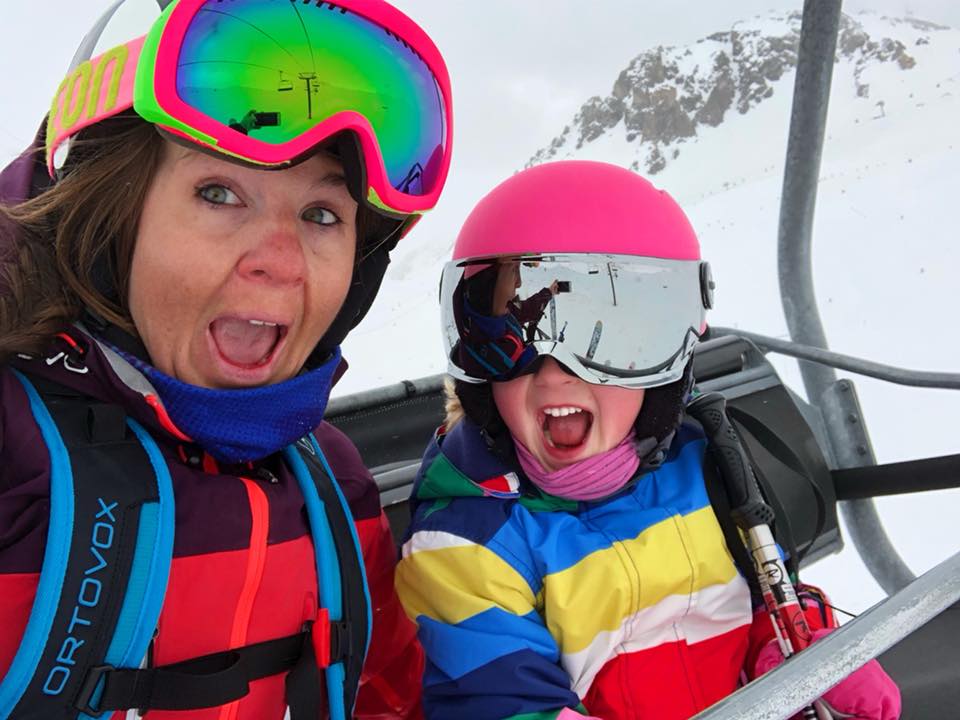
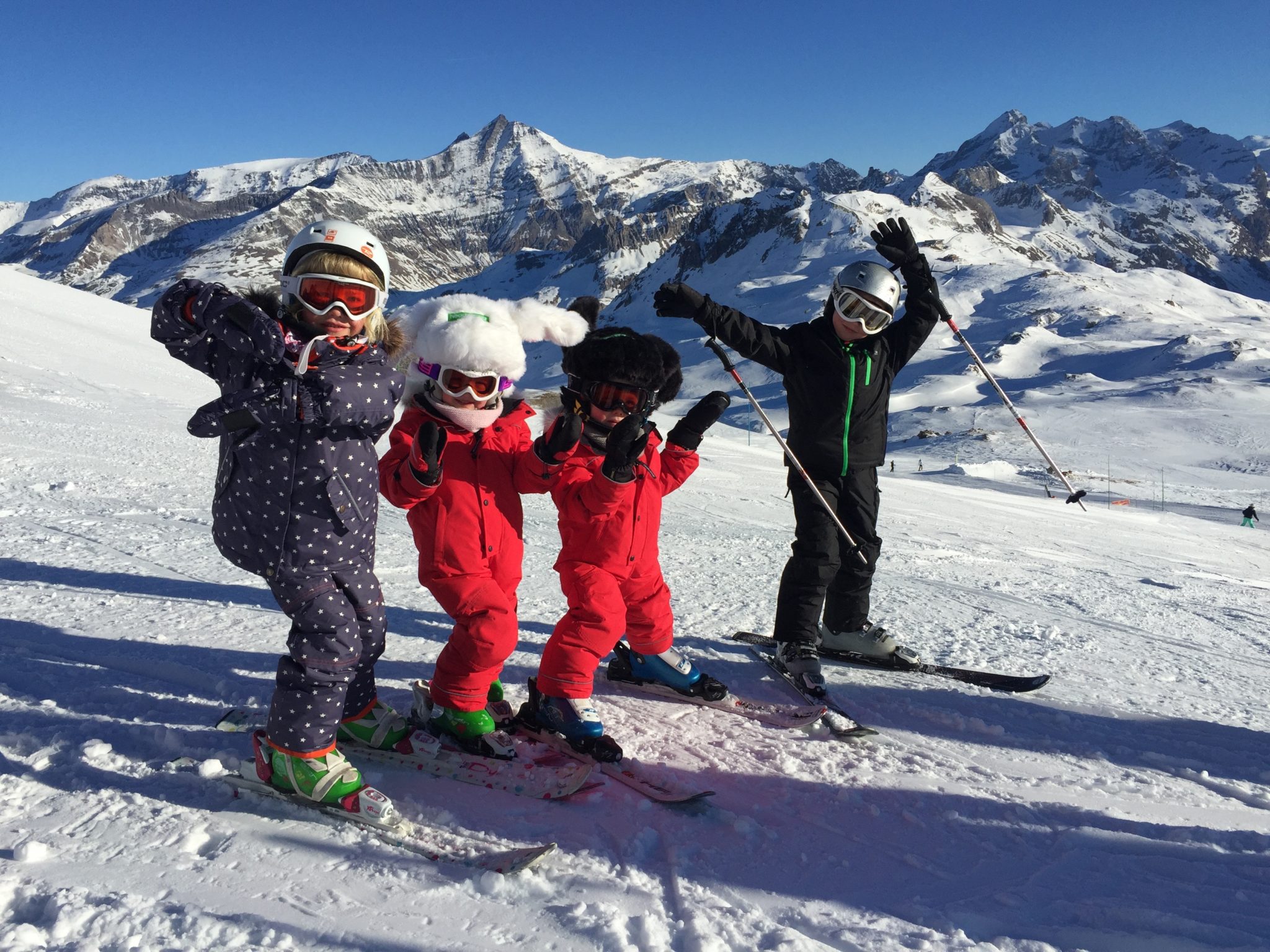
WHEN TO GO
If you can, consider weeks other than New Year, February half-term and the Easter holidays. These weeks are the most popular with families who are constrained by term dates. So they are the most expensive and the busiest, so not the best in terms of value, money and experience. If your child is not yet at school or is able to get away with coming skiing in the off-peak weeks then there is an obvious advantage there.
December
There is no doubt that Christmas in the Alps is special with a young family. During December in Tignes we are up high enough to be snow sure and the first few weeks of the season often lie within Christmas school holidays and can be much cheaper and quieter with a festive build up to Christmas. After Christmas the New Year week tends to get busier with families who spent Christmas at home and come out for the New Year celebrations.
January
The quietest time to ski is in January once the kids have gone back to school, so it is ideal if you are looking for less busy slopes. It’s a great time for beginners and less experienced skiers and queues barely exist. However It’s the coldest time of the year on average so children need to be really well dressed and take more hot chocolate stops.
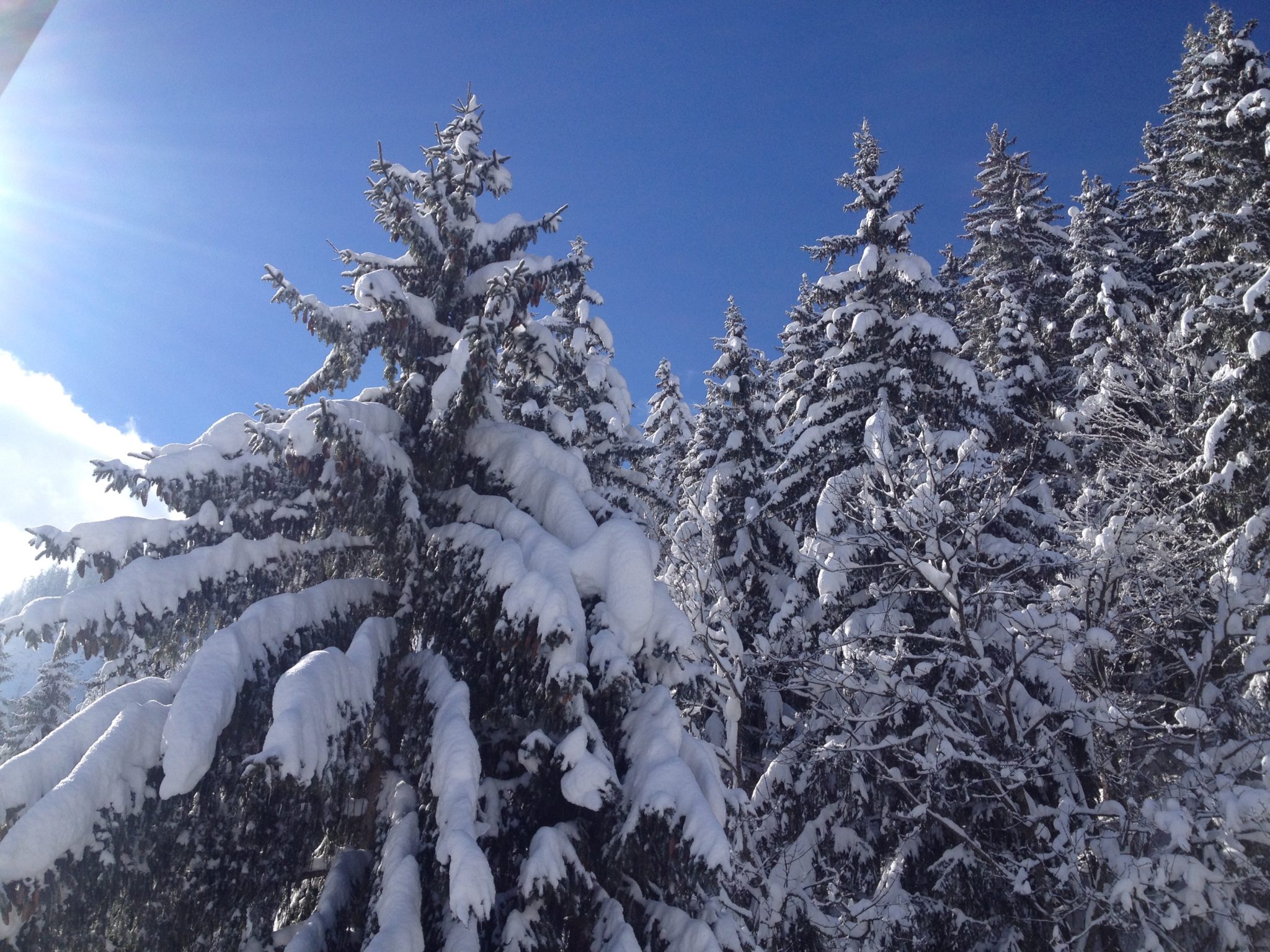
February
February is peak skiing time with generally the best skiing conditions of the winter as the snow depth has had time to build up. The snow is normally in great condition and yet the sun has started to help us feel a little bit warmer. For this reason it is the busiest time on the slopes and not the best time for beginners who are finding their feet or people nervous skiing around others. Bear in mind that ski schools and private instructors are all fully booked months in advance for the February peak weeks, so if you’re bringing the kids then, book as far in advance as possible.
March
March is a bit quieter, particularly after the first week and the slopes and restaurants become less busy.
It is a bit like January except that you are swapping those cosy log fire lunches for sunny terrace lunches. The days are longer, the sun is stronger, yet the snow is usually still deep and often still with good dumps of fresh snow. So a great time to bring the kids skiing if you can bust them out of school – they will learn much more skiing in the mountains then they will in a classroom.
April
April is the sun-lovers time to ski, not only can you normally enjoy sunny lunches but sunny après ski activities too. In April, morning lessons are better as the snow gets very soft in the afternoon. Your kids will start to enjoy nature appearing, spotting the odd flower, marmot and butterfly on the lower slopes. Just as early in the season choosing a snow-sure resort is important, so again Tignes is the top choice! Again the peak holiday weeks for Easter will be busy, more expensive and booked up way in advance.
July
That’s correct I did just say July! Tignes offers skiing on the Grand Motte Glacier during the end of June and July. This is brilliant for older, confident children who like to go fast. We Offers junior race camps, where they ski all morning and do fun adventure and fitness activities in the afternoons.
October and November
In Tignes the season can start as early as the end of september on the glacier. The funicular takes you up to 3456m in just 7 minutes. If you’re aiming to improve your skiing in anyway, you will get something out of skiing on the glacier no matter what the conditions are. Like the summer we offer children’s Junior race camps, for kids who love to go fast.
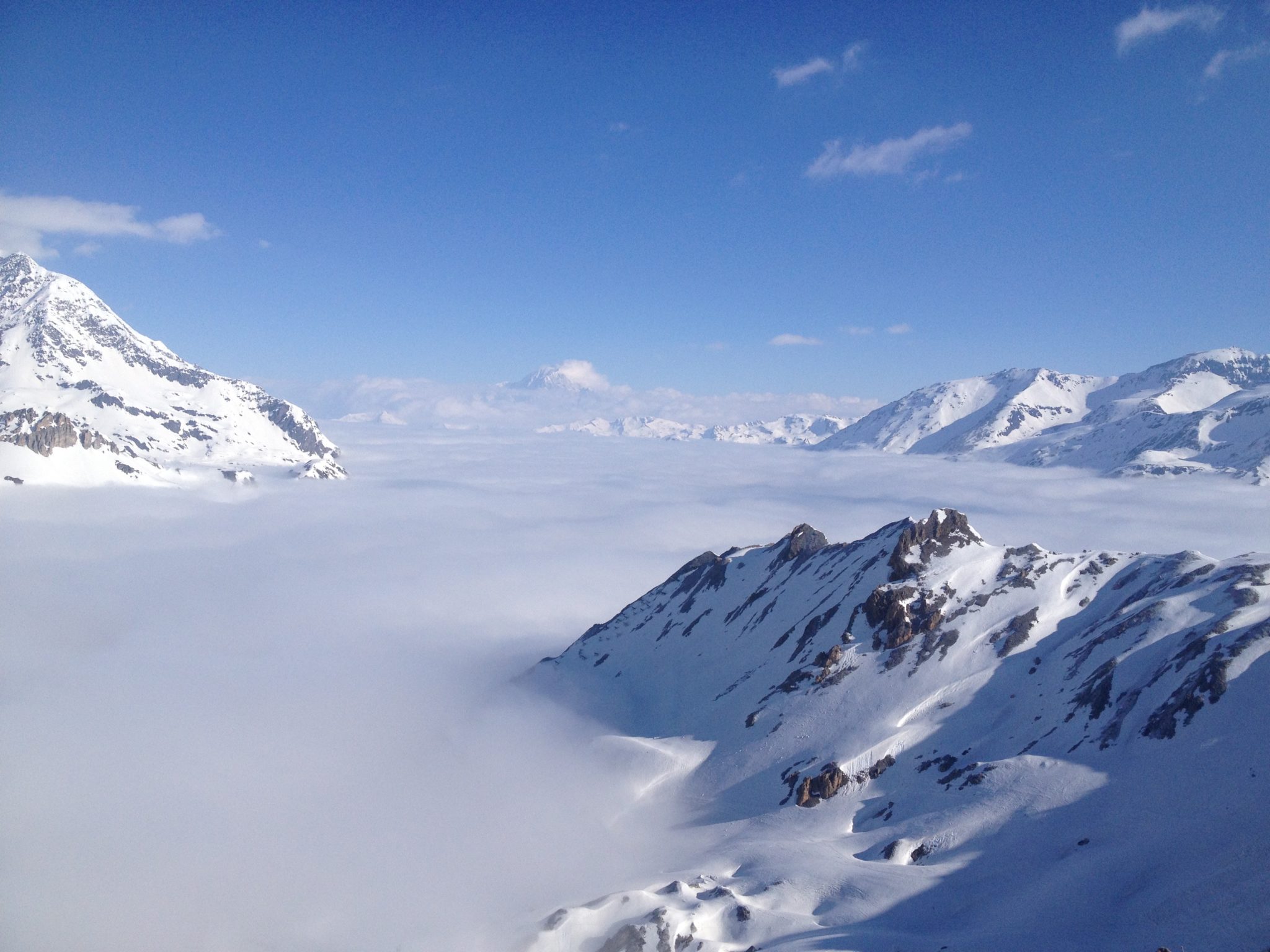
TRAVELLING WITH CHILDREN
Most families who want to take their children skiing will need to travel and the quickest, easiest and cheapest way to this part of the Alps is to fly to Geneva, Lyon or Chambery airport.
I believe the key to a happy journey is to be prepared for anything and remember that the journey is part of the whole experience and to be enjoyed it as much as possible. Here are my top tips for flying with children and babies…
REMEMBER THE WONDER OF FLYING
The whole experience will be so much more enjoyable if you remember the wonder of flying, it is fun and amazing! Your little skiers are probably very excited about going up in the sky in a real airplane! So you can be too… Point out to them the small houses, the roads, forests, the clouds and the setting sun.
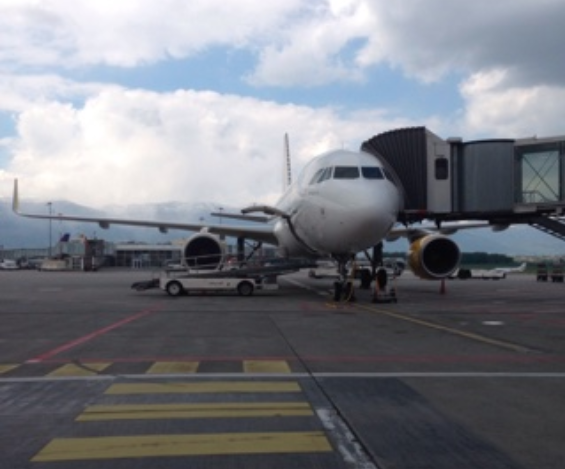
UNDERSTAND YOUR AIRLINES REGULATIONS
There are so many variations in the charges and regulations involved with taking your baby on a flight. Different airlines have different rules, make sure you check the current regulations on your airlines website.
Most airlines allow children under 2 sit on your lap and allow you to take 2 pieces of baby equipment, for example your pushchair, car seat etc. It’s my understanding that all airlines give you free priority boarding. It’s important to check all this, as some airlines will charge you up to 75% even if your child is sitting on your lap.
You’ll need to take your child out of their pushchair to pass through security so if they need a nap try and not let them fall asleep right before you get to security. Annoyingly you will probably have to buy water once you are through, so remember that.
Consider getting a buggy bag to protect your pushchair, plus you wouldn’t be the first person to use this bag to relieve your case of some extra nappies/wipes/toys etc.
BE OVER PREPARED
You will need to keep your children entertained but you don’t want to be overrun with toys, snacks, games and books. A film on an iPad with headphones can keep them entertained for quite a while, and games like I-spy, making up stories together and telling jokes take up no space in your bags at all.
Consider letting your standards slip during a flight, if they want to play games on the iPad for the whole journey, maybe just let them. My son loves travelling and is so quiet because he is allowed to watch movies and play computer games as much as he wants when he is normally not able to do this.
The following airports have soft play areas or games zones for children, where they can burn off some energy before their flight.
Heathrow, Gatwick, Manchester, Birmingham, Stansted, Edinburgh, Glasgow, Bristol, East midlands, Robin Hood, Leeds Bradford, and Newcastle
Prepare food, you know what your child likes, surprise them with something they love to eat. Putting food into zip up sandwitch bags, means you don’t need to worry about carrying lots of lunchboxes.
Little ones don’t always know how to pop their ears to stop the buildup of pressure when landing and taking off, so take something for them to chew or suck on during take-off and landing.
100ml rule
Babies get an exemption to the 100ml rules on liquids and you can pack as much food and drink as you reasonably need for travel, provided that the total amount is no more than 1 litre. You may be asked to taste it for security reasons
(you can double check this imformation is still the case by visting your airlines website)
TAKE YOUR TIME
Allow yourself time to cruise through the airport and enjoy the little things without worrying about the time. Work out how much time you need then add half again.
When the doors open at the end of the flight everyone rushes to get out as soon as possible. It doesn’t mean you have to too. Wait until everyone else is leaving and start packing up your things and double checking you have everything. It’s so much easier to disembark an empty plane.
Look after yourself too
The airline staff themselves will tell you ‘help yourself, before helping others’ ….. A happy parent is a good parent, so care for yourself as well as you care for your children. Some little things like wearing comfortable and easy footwear to remove at security and keeping your passports and boarding cards handy. Having something for yourself to drink and eat too of course.
WHERE TO STAY
Child friendly chalets are best for family ski holidays…Ski chalet holidays have a homely and more relaxed feel than hotels. Many chalets are kitted out with families in mind which means they often offer childcare and play rooms. In a child-friendly chalet they know the importance of stair-gates, comfy cots, highchairs and baby monitors and are aware of the important safety aspects like keeping dangerous things out of reach. They know how to prepare a meal an infant, toddler and child will enjoy served at an earlier time than the adults.
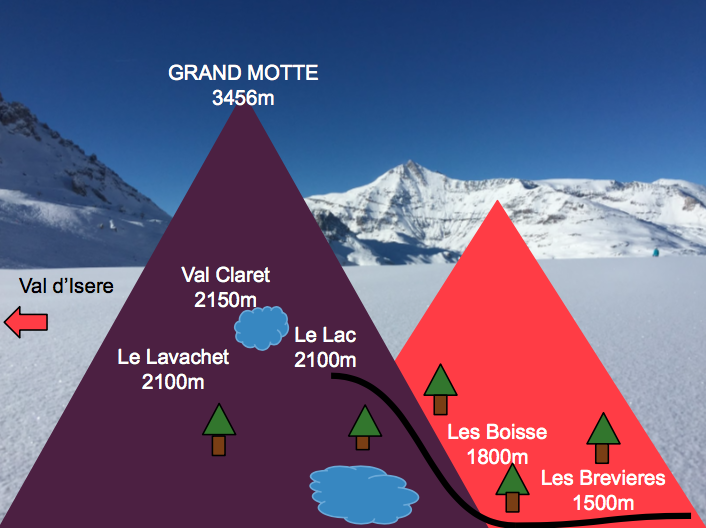
Tignes comprises of 5 villages.
– Val Claret 2150m
– Le Lac 2100m
– Le Lavachet 2100m
– Le Boisse 1800m
– Les Brevieres
For the easiest access to ski lesson meeting points and apres ski activities, it is best to stay in one of the top 3 villages.
If you choose to stay in Les Boisse it is possible to get a bus up the mountain between limited times.

